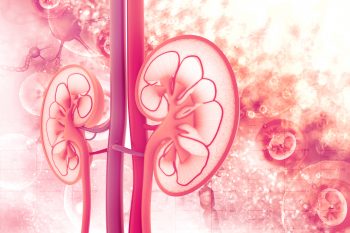
Washington, DC—Researchers, led by Matthew Weir, MD, conducted a post hoc analysis to examine the efficacy and safety of patiromer based on the severity of baseline hyperkalemia. Patiromer, a sodium-free nonabsorbed potassium binder, uses calcium as the counter-exchange ion. Results were reported during a poster session at Kidney Week 2019 in a poster titled Efficacy and Safety of Patiromer by Baseline Serum Potassium Level <6.0 vs ≥6.0 mEq/L: Pooled results of Three Studies.
The analysis included pooled data from trials of patiromer, including AMETHYST-DN, OPAL-HK, and TOURMALINE. Participants of the three trials were patients treated with patiromer with a starting dose of up to 25.2 g/day. Included in the post hoc analysis were patients who took one or more dose of patiromer and had one or more serum potassium measurement post baseline. Eligible participants were stratified according to serum potassium level: ≥6.0 mEq/L and <6.0 mEq/L. Outcomes of interest were change in serum potassium from baseline at week 4, serum potassium level over time, and the percentage of participants with any serum potassium measurement in the target range (3.8-5.0 mEq/L).
A total of 623 patients were included in the evaluation. Of those, 53 had baseline serum potassium ≥6.0 mEq/L and 570 had baseline serum potassium <6.0 mEq/L. At baseline, mean estimated glomerular filtration rate (eGFR) was 33.0 mL/min/1.73 m2 in those with serum potassium ≥6.0 mEq/L and 40.2 mL/min/1.73 m2 in those with serum potassium <6.0 mEq/L. In both groups, >90% of patients were taking renin-angiotensin-aldosterone system inhibitors. At day 3 (48 hours after taking first dose), mean serum potassium was reduced to 5.5 mEq/L in both groups.
Through week 4, 97% of patients in the serum potassium <6.0 mEq/L group and 93% of patients in the serum potassium ≥6.0 mEq/L group achieved any serum potassium measurement in the target range. At week 4, mean reductions from baseline were –0.67 (95% confidence interval [CI], –0.71 to –0.63) and –1.67 (95% CI, –1.91 to –1.43) in the serum potassium <6.0 mEq/L and serum potassium ≥6.0 mEq/L groups, respectively.
In the serum potassium <6.0 mEq/L group, 31% of patients reported adverse events versus 43% in the serum potassium ≥6.0 mEq/L group. Adverse events related to patiromer (most commonly constipation and diarrhea) were reported in 13% and 19%, respectively.
In summary, the researchers said, “Patiromer was effective and well-tolerated in patients with mild/moderate hyperkalemia and severe hyperkalemia. Regardless of the severity of hyperkalemia, treatment with patiromer lowered serum potassium to 3.8-5.0 mEq/L in 93% of patients in 4 weeks. A higher rate of constipation occurred in the serum potassium ≥6.0 mEq/L subgroup and may be related to the fact that these patients appear to have worse overall health (e.g., lower eGFR).”
Source: Weir MR, Mayo M, Yuan J, Conrad A, Rafique Z. Efficacy and safety of patiromer by baseline serum potassium level <6.0 vs ≥6.0 mEq/L: Pooled results of three studies. Abstract of a poster presented at the American Society of Nephrology Kidney Week 2019 (Abstract FR-PO254), November 8, 2019, Washington, DC.
Funding for this study was provided by Relypsa, Inc.






 © 2025 Mashup Media, LLC, a Formedics Property. All Rights Reserved.
© 2025 Mashup Media, LLC, a Formedics Property. All Rights Reserved.